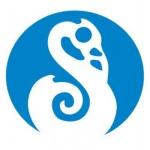Rena update (update 176)
20 January 2012 - 4.00PM
Salvors have been able to manoeuvre the Smit Borneo alongside the bow of Rena, allowing 13 containers to be lifted off the bow section..
Weather remains fine with sea conditions conducive for continued container recovery from the bow section.
Oiled wildlife response manager Teri McClelland said the number of oiled birds – live and dead – being collected around the Bay of Plenty remained small.
This was largely due to the fact only small amounts of oil were reaching the shoreline but was also because the little blue penguins were in their moult period.
“Penguins go through what is called a ‘catastrophic moult’, which means they lose all their feathers and then grow them all back,” Ms McClelland said.
“The moult takes between 10 and 18 days. When the penguins feel they are soon to start moulting, they start eating a lot to fatten themselves up and then they tuck themselves up in their burrows to wait out the moult.”
The penguins have no waterproofing while the moult is underway, so they remain in their burrows and do not go into the sea to feed.
“There’s a reasonably long moult season, between December and March. The timing is actually quite good this year, as it means a lot of them are safely tucked away and not going into the water and coming into contact with oil or debris,” Ms McClelland said.
The oiled wildlife team had been conducting both night and day patrols and had found very few penguins affected by oil.
“We are receiving a lot of reports of dead birds, but very few of them are actually oiled. There is a high natural mortality rate at this time of year, so it could just be that. Many of these birds have just left the nest and are experiencing their first ventures into the big wide world. We are taking in the dead birds and will be conducting autopsies to confirm the causes of death where we can.
“It’s important that people don’t disturb the birds while they are moulting.”
Braemar team cleanup efforts are focused on two main areas today – Waihi Beach and Bowentown Heads – and East Cape.
At Anzac Bay, Bowentown Heads, a container has been winched ashore in preparation for unloading its contents – packets of milk powder – before final removal. There are two more containers to be retrieved from the Bowentown Heads area. Some more latex gloves have also washed ashore there and are being collected.
Meanwhile, cleanup is continuing on Waihi Beach where more sheets of wood and other debris have come ashore at the northern end near the surf club.
Braemar specialists say some further debris has washed on the East Cape however the situation is well under control. Labour teams have been mobilised to collect debris from local beaches and coves, and a number of skips have been sent to the area. A fast response craft is also operating close to shore.
A tug is also patrolling today around the wreck and in the direction of Motiti Island to intercept any floating debris. Braemar is not aware of any containers floating loose at sea.
Braemar is also continuing to try and pinpoint containers on the sea-bed with a number targets identified between the wreck and Motiti Island.
